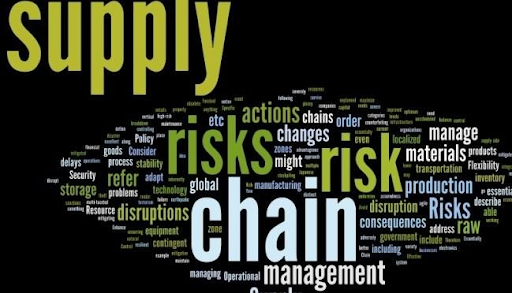In recent years, sustainability has become an urgent priority for industries worldwide, and packaging is no exception. Traditional packaging materials like plastic and styrofoam have long been recognized for their environmental impact, contributing significantly to pollution and increasing the carbon footprint. In response to these concerns, pulp molded packaging has emerged as a viable and eco-friendly alternative. This innovative packaging solution offers multiple environmental benefits, including a reduction in the carbon footprint across the supply chain. In this article, we explore how pulp molded packaging plays a key role in reducing the carbon footprint in the packaging industry and how its adoption is helping businesses become more sustainable.
What is Pulp Molded Packaging?
Pulp molded packaging refers to products made from molded pulp, which is a renewable material produced by recycling paper products such as newspapers, cardboard, or other paper-based fibers. These fibers are mixed with water to form a slurry, which is then molded into the desired shape. After the molding process, the material is dried, resulting in a sturdy yet lightweight packaging solution. Pulp molded packaging is commonly used for protective packaging, including food trays, clamshells, and shipping containers.
The material is biodegradable, recyclable, and compostable, making it an environmentally friendly alternative to traditional plastics and other non-renewable packaging materials. Unlike plastic, which is derived from petroleum-based resources, pulp molded packaging is sourced from renewable paper fibers. This not only reduces dependence on fossil fuels but also contributes to a significant reduction in harmful emissions associated with the production of non-sustainable packaging alternatives.
Reduction of Carbon Emissions in Manufacturing
One of the main environmental benefits of pulp molded packaging is its potential to reduce carbon emissions during the manufacturing process. The production of traditional plastic packaging materials involves high levels of energy consumption and releases large amounts of greenhouse gases (GHGs) into the atmosphere. Pulp molded packaging, on the other hand, requires less energy to manufacture and produces fewer emissions. The process of creating pulp molded packaging primarily involves heating and drying, which are less energy-intensive compared to the complex chemical processes used in plastic production.
In addition, since pulp molded packaging is made from recycled paper products, it reduces the need for virgin materials, which are typically sourced through environmentally destructive processes such as deforestation and mining. This reduction in material extraction further minimizes carbon emissions linked to raw material acquisition. By adopting pulp molded packaging, companies can significantly reduce their overall carbon footprint in packaging production, making it an essential component of their sustainability strategies.
Pulp Molded Packaging and Waste Reduction
Another major benefit of pulp molded packaging is its role in reducing waste. Traditional packaging materials like plastic often end up in landfills or the ocean, where they can take hundreds of years to decompose. This contributes to an enormous environmental burden, adding to the global plastic pollution crisis. In contrast, pulp molded packaging is biodegradable, meaning it breaks down naturally over time without leaving behind harmful residues.
Moreover, pulp molded packaging can be composted, adding another layer of environmental benefits. When disposed of properly, it decomposes into organic matter that can be returned to the earth, enriching the soil without causing harm to the environment. By using pulp molded packaging, businesses can minimize their contribution to landfill waste and reduce the amount of non-degradable packaging materials in circulation. This waste reduction also supports a more circular economy, where materials are reused or returned to the environment in a sustainable manner.
Transportation Efficiency and Carbon Footprint
Transportation is a key component of the overall carbon footprint of any product, and packaging is no exception. The weight and volume of packaging materials directly impact the amount of energy required for transportation. Pulp molded packaging, being lightweight and compact, can significantly reduce the energy required to transport products. This is particularly important for industries that rely on bulk shipping and large-scale distribution, as reducing packaging weight can lead to fuel savings and lower emissions associated with transportation.
Furthermore, pulp molded packaging’s ability to be molded into custom shapes and sizes allows for more efficient use of space during shipping. By optimizing packaging dimensions to fit products more snugly, businesses can reduce the number of trips needed to transport goods, thus minimizing the overall carbon footprint of logistics. This makes pulp molded packaging not only an eco-friendly choice from a production standpoint but also from a transportation perspective, contributing to a reduction in transportation-related emissions.
The Role of Pulp Molded Packaging in Circular Economy Models
As companies and governments increasingly recognize the importance of the circular economy, the adoption of sustainable practices has become essential for reducing global carbon footprints. A circular economy is based on the principles of reducing, reusing, and recycling materials to create a closed-loop system. Pulp molded packaging aligns perfectly with this model, as it is made from recyclable and biodegradable materials. After use, pulp molded packaging can be collected, recycled, or composted, thus preventing waste and reducing the need for new raw materials.
Additionally, the use of recycled paper in pulp molded packaging supports the recycling industry, creating a demand for more recycled materials and encouraging the collection of paper waste. This creates a positive feedback loop where the recycling process itself becomes more efficient, further reducing the carbon footprint associated with packaging production. By integrating pulp molded packaging into their operations, businesses contribute to the development of a more sustainable, circular economy while simultaneously reducing their environmental impact.
Conclusion
Pulp molded packaging is a game-changer in the packaging industry, offering a sustainable and eco-friendly alternative to traditional plastic and foam-based materials. By reducing carbon emissions in manufacturing, cutting down on waste, improving transportation efficiency, and supporting circular economy practices, pulp molded packaging plays a crucial role in minimizing the environmental impact of packaging. As more companies recognize the importance of sustainability, adopting pulp molded packaging can be an effective strategy to reduce carbon footprints and contribute to a cleaner, greener future for the planet.









